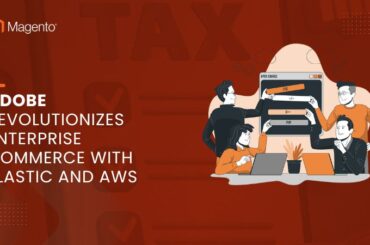Magento Alternatives: What are the Best Magento Competitors?
Last Updated | July 27, 2023
Table of Contents
Magento was officially launched in 2008, with an open license, by Roy Rubin and Yoav Kutner. This software has been created by using the Zend Framework. The company was initially bought by eBay, and then sold to Permira. Later, Permira sold the company to Adobe. After the initial launch of Magento, Magento 2.0 was introduced on 17th November 2015.
However, the users of this eCommerce platform, have been looking for Magento alternatives, due to various reasons. These reasons have been discussed in this post. Read below to find out the reasons why users are looking for Magento alternatives.
WHAT IS MAGENTO?
Magento is an eCommerce platform based on open-source technology. This means that the users who download the Magento Software can easily make change stop the source code, which helps them in customizing their shopping cart. Magento is well suited for mid-sized and large business setups.
It is not considered to be a viable option for small businesses due to the costly overhead running, and because it is thought to be fairly complicated than its competitors. Small businesses do not have the budget to take a full-fledged advantage of Magento services.
Magento 2.0 was released with a few changes in its features. These changes include:
- A more user-friendly experience with simplified navigation tools
- Better security by allowing only one person to log into the admin user account
- Drag and drop layout to help spend less time managing your store
- Improved product section for customers
- Streamlining of common admin tasks to speed up and simplify work
- Product configuration is possible from the new product page
- Improved product dropdown options
- Improved checkout services
- New payment methods
- New Magento Marketplace with vigilant reviewing
- Built-in full page caching
- Improved framework
Magento provides its users with three distinctive platforms. These three platforms are:
1. The Magento Open-source
Previously known as the Magento Community Edition, this is a free product that can be downloaded by anybody from the Magento website. It is an open-source eCommerce platform, in which users can implement core files, as well as add new third party plugins for better functionality.
Initially, in 2007, a beta version was released for the public, and new versions of 1.X and 2.X are available for download on Magento’s website. The actively supported versions of the Magento Open-source are 1.9.4.4 and 2.3.4. However, the 1.9.4 version of Magento will reach its end of life on 30th June 2020.
2. Magento Commerce
The Magento Commerce was released on 11th April 2016 as a platform for eCommerce. This caters to all levels of businesses. Magento Commerce is also available in an on-premises version. This version is known as the Magento Enterprise Edition and is considered a viable option for enterprises, due to the steep monthly costs.
3. Magento Enterprise Cloud Edition
Furthermore, Magento also provides its users with a cloud-hosted option. This is called the Enterprise Cloud Edition. Even though this edition is cloud-hosted, it is not considered to be the same as Software-as-a-Service (SaaS).
Top Reasons For Why You Are Looking For Magento Alternatives
Back in 2008, when Magento was first released, there were not many options available for eCommerce platforms. Recently, Magento is not considered to be a universal solution for every business; perhaps, it could be a good option for well-established businesses.
Now in 2020, Magento has many eCommerce competitors that can be good alternatives to Magento. Below, the top reasons for looking for Magento alternatives have been discussed.
Magento comes with a heavy price tag
Magento is not considered to be a viable option for small business setups. The heavy architectural structure could cause a troublesome experience for somebody who has no previous knowledge of coding or Magento web development.
This means that an IT manager would be hired to help the business owner with the coding base of Magento, adding to the cost of running the business. However, the Magento Open-source Edition is free to download from Magento’s website, but it will not suffice for your ownership.
To set up your website, you would have to pay for the Magento eCommerce web design and development fee. In addition to this, you would also have to pay for your eCommerce security, which is an essential requirement for your business, yet costly at the same time.
Read Also Best Alternative to Shopify
Furthermore, the cost of The Magento Enterprise Edition varies between $22,000 to $125,000 annually. However, it could be more or less, depending on your business’s requirements. On the other hand, the Magento Cloud Edition is the most expensive edition of Magento. It can vary between $40,000 to $125,000 annually. The majority of the businesses do not have that much money to spend on Magento.
Magento is slow
Although you get to use numerous plugins, you would have to compromise on the running speed of your website. This could be a big challenging task for IT developers to combat this issue, which, in turn, could be time-consuming for them. This issue could cause you to lag behind your competitors.
Magento requires longer development time
It could take anywhere between six weeks up to one year, depending on the complexity, for the running of your website. Due to the complexities in the running of Magento, you need to hire trained and skilled web developers for the smooth running of your website. You would have to rely on their skills for the development of your website.
The story does not end here; you would constantly need their help to monitor and update your website.
Maintaining Magento is a difficult task
With the integration of numerous plugins, there is always a threat of unlimited bugs, glitches, and crashes of the system. To keep up with these challenges, the IT developers and managers of your system have to keep abreast of all the solutions for a smoother running of your website.
Furthermore, with these bugs, there is always a security threat to your business. Hence, you would have to invest in a good, fool-proof security system to protect your business.
Forceful Magento 2 Migration Services
After June 2020, Magento will stop providing any support for Magento 1 and is encouraging all its users to migrate to Magento 2. This would make the Magento 1 users vulnerable to security threats. However, migrating from Magento 1 to Magento 2 is not an easy task, and it requires a lot of work to migrate. Most users would not like to put in so much effort and go through this cumbersome process and are looking for Magento eCommerce alternatives.
You have had enough of Magento
If it is not one of the reasons listed above, you are just fed up with Magento and would like to explore better alternatives for eCommerce. Maybe your customers have had a poor experience with your website, and it bothers you, and you want to look for better alternatives to Magento. Don’t worry; we’ve got your back! Let’s explore a few alternatives to Magento.
Top 5 Alternatives Of Magento
With a recent increase in the trend of eCommerce, various platforms are available in the market for you to choose from. Below, we have listed the top five alternatives to Magento:
- BigCommerce
- WooCommerce
- OpenCart
- Shopify
- SalesForce Commerce Cloud
Now, since we have listed the Magento alternatives, let us compare them to Magento and see why these competitors would be a good alternative for your business.
MAGENTO VS BIGCOMMERCE
BigCommerce is a good alternative to Magento, with an open SaaS platform. It is suitable for all types and sizes of businesses, unlike Magento. Let’s have a closer look at the seamless features of BigCommerce:
BigCommerce is affordable
Unlike Magento, BigCommerce offers its users with better price plans but a little bit high than Woocommerce pricing plan. Instead of an annual fee, BigCommerce users would have to pay a monthly fee, depending on the pricing plan you have opted for. The BigCommerce Standard Price Plan is for $29.95 per month, and the most expensive plan is the BigCommerce Pro Price Plan, which is for $299.95 per month.
The BigCommerce Enterprise Plan is a customizable plan, for which prices may say according to your business requirements. On the other hand, the Magento Open-source platform is free to download, but it requires a lot of numerous plugins to be purchased, which eventually defeats the purpose of the availability of free download.
The mid-range edition is the Magento Enterprise Edition, which costs between $22,000 to $125,000, which is not an affordable price for most business owners.
BigCommerce provides 24/7 support for its users.
BigCommerce provides its users with professional help at any given time of the day. Their support team will be there to assist you via phone, email, and chat. Furthermore, BigCommerce’s community forum will provide you access to blog posts written by various BigCommerce experts.
BigCommerce also provides its users with thorough help in setting up their website by posting pre-set tutorials and self-explanatory videos to guide the user better. These features are lacking in Magento.
User-friendly interface.
BigCommerce provides its users with a professional yet simple to use interface. Unlike Magento, BigCommerce does not have a heavy architectural structure, nor does it have any code availability, which requires IT managers to help you with coding or web development. Hence, you can save that time and money and invest it in the marketing and customer care of your business.
Quick set-up with BigCommerce.
You can set up your website without any waiting or hassle, thanks to the tutorials and simple yet competitive features provided by BigCommerce. However, this is not the case with Magento. You would need to wait somewhere between six weeks to one year, depending on the complexity of your business.
Flexible APIs with BigCommerce.
BigCommerce provides its users with an added advantage of flexible APIs. This feature is not available on Magento.
Better SEO features than Magento
With BigCommerce, you get better SEO features, which can help you to increase your sales. But Shopify SEO much comparatively better than Bigcommerce.
MAGENTO VS WOOCOMMERCE
WooCommerce is a plugin that can be integrated with WordPress. It is an open-source eCommerce platform that can be added to any WordPress site, and you can set up your web store. If you already have a WordPress site, then setting up a store on WooCommerce would not be a hassle at all. Have a look at the various features of WooCommerce:
Faster page loading time.
WooCommerce provides its users with a standard theme page of about 700 kbps, which loads under 300 ms. On the other hand, Magento provides a standard theme page of 1 MB, which loads in 450 ms. It may even take longer if there are any issues with internet connectivity.
Easy to set up.
If you already have a WordPress website and would like to explore the eCommerce platform, WooCommerce is the right option for you. You just need to get the WooCommerce plugin and start setting up your website. This is not the case with Magento.
Fewer complexities involved.
WooCommerce does not have a heavy architectural structure like Magento. Hence, you can set up your website on your own without having to spend on hiring professional IT help. Due to this reason, setting up your web store is faster, quicker, and hassle-free.
WordPress Blogs.
This feature can help you gain more customers. This can be put to good use in the marketing of your business.
MAGENTO VS OPENCART
OpenCart is another Magento alternative, which is an open-source eCommerce platform. The main features of OpenCart are:
A user-friendly interface.
With OpenCart, you can manage multiple stores from one interface without any hassle. It provides you with a seamless 4-step launching procedure for your web store, unlike Magento.
Strong SEO features.
OpenCart provides its users with strong, advanced SEO features. This helps in running your business in a better way and in increasing your sales.
Multi-currency and multi-language options available.
Customers will have an option to choose their currency to continue with the transaction. Furthermore, with the multi-language option, customers can feel at home and order products from your store comfortably. With these two options, you can easily build international customers.
MAGENTO VS SHOPIFY
Shopify is another well-known eCommerce platform, which could serve as a better alternative to Magento. Its features are:
Wide range of templates
The user gets a wide range of templates to choose from. These templates can be set up without any additional help from IT managers. These themes are very responsive, professional, and customizable. These templates are also mobile-friendly.
Better technical support system.
Shopify provides its users with a 24/7 dedicated support team. The well-trained staff can be accessed via phone, email, or webchat.
Cheaper than Magento.
Shopify has a base fee that is very affordable by all types of business owners. However, Magento’s price plans cannot be afforded by many business owners.
MAGENTO VS SALESFORCE COMMERCE CLOUD
SalesForce Commerce Cloud is another eCommerce platform that could be a good alternative to Magento. Formerly known as Demandware, the SalesForce Commerce Cloud is yet another open-source platform with the following features:
Omni-channel solutions.
With SalesForce Commerce Cloud, you can integrate your brick and mortar store with an online retail store. This provides the customer with a better shopping experience. This feature is not available on Magento.
Flexibility for shoppers.
It is not just about buying products for customers; it is also about their shopping experience with you. If a customer is not happy with their product, they can also return their products to any store. Furthermore, customers are also provided with the option of paying online and picking up their products from the store. This feature is unique to the SalesForce Commerce Cloud.
Final Thoughts
There are a lot of Magento and Magento 2 competitors and alternatives available for you to choose from in the market. Every alternative discussed has its pros and cons. However, at the end of the day, every business has different requirements and budgets.
One alternative could be best suited for one business and another one, it might not be efficient at all and could be a total waste of money. If your business has the money to splurge on Magento, it could be a good choice for your business.
FAQs:
What are the exact reasons for you leaving Magento?
Leaving Magento is a user’s choice. If you happen to be a Magento user, you should know that after June 2020, Magento will stop providing support for this version and requires you to migrate to Magento 2. This could be one of the reasons. A few other reasons could be:
- Maintaining Magento is difficult
- You have had a poor experience with Magento
- Magento takes a longer website development time
- Magento runs slow
- Magento comes with a heavy price tag
When was Magento founded?
Roy Robin, the CEO of Magento, had initially launched a project named Varien, while he was still attending college at UCLA. In early 2007, he placed ads on Google Adwords and landed himself a big contract, which helped in funding the framework for Magento.
Robin recognized the big gap in the eCommerce market and decided to launch Magento through Varien. On 31st August 2007, the first beta version of Magento was released, and later, on 31st March 2008, Magento was launched with an open license. On 17th November 2015, Magento 2.0 was released.
How much revenue does Magento generate?
Magento generates an estimated revenue of at least $186.4M annually.
How much funding does Magento have?
Magento has had total funding of $272.5M in two rounds. The first round was held on 15th March 2010. The latest funding was raised on 4th January 2017 in a private equity round. These funds were raised by two lead investors- Hillhouse Capital Group and eBay.
Where is Magento’s headquarters?
Magento’s current headquarters are located on 345 Park Ave, San Jose, California 95110, US.
How many employees does Magento have?
Currently, it is estimated that Magento has employed between 501 to 1000 employees.
Why do businesses require to create Shopify apps?
With the rapid penetration of mobile devices and easy access to high-speed internet, online shoppers today prefer a more personalized shopping experience. Web-based stores aren’t enough to penetrate today’s hyper-personalized shopping trends, and thereby, Shopify stores need professionally developed and designed apps to attract and retain prospective customers, as well as, to transform their businesses into brands.












